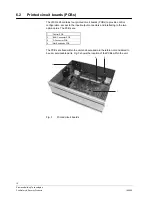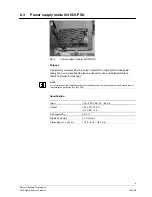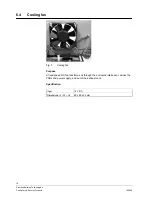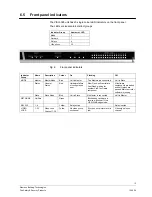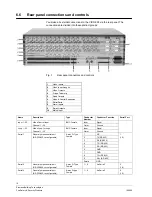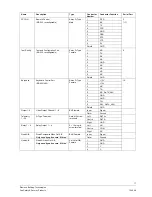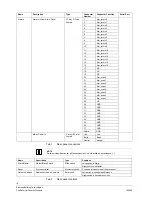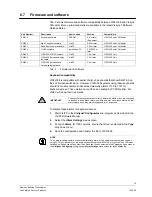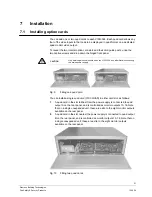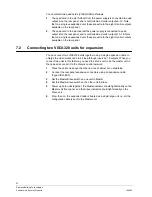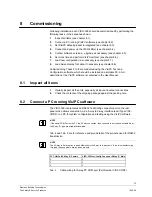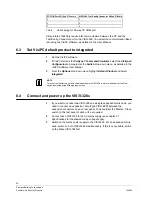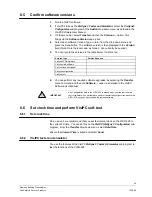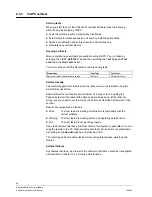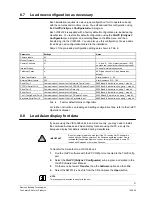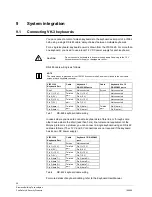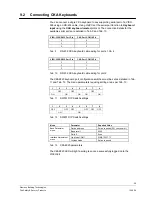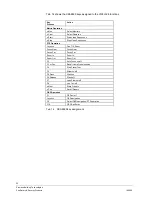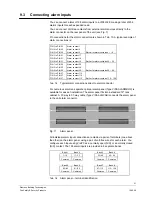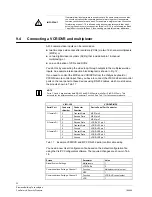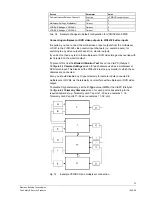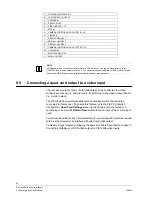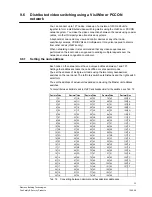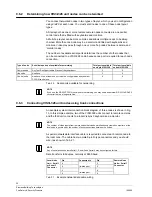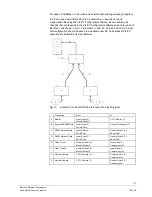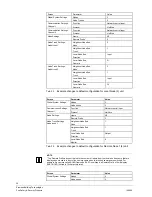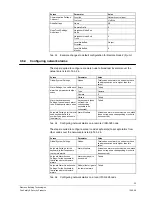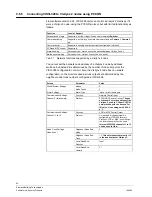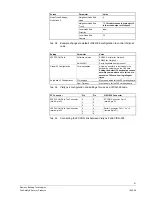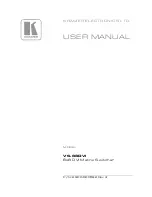
26
Siemens Building Technologies
Fire Safety & Security Products
10.2008
8.6.3 VisiPC
self-test
Start up tests
When you start the unit, the VIS3I-328 controller software does the following,
without being instructed by VisiPC:
z
Tests the stored program, data and key electronics.
z
Auto-detects the Slave expansion unit and any installed option cards.
z
Stores auto-detection and self-test results in the self-test log.
z
Generates any self-test alarms.
Running self-tests
More comprehensive self-tests are available using VisiPC. You run these by
selecting the VisiPC
Self-Test
Tab and then selecting the
Test Typ
e and
Test
Level
from the
Run Tests
button.
You can run these VisiPC self-tests as commissioning tests:
Preparation
Test Type
Test Level
Remove all video and serial data cables
All Tests
All Internal Tests
Self-test results
The results logged from all tests since the last power-up are retrieved using the
Self-test Results button.
Each Self-test record consists of a maximum of 5 lines of text, including the
Pass/Fail status of the test and the date and time it was done. (If the latter are
wrong, you may need to set the internal clock time as described at the start of this
section.)
Results are categorised as follows:
z
Pass
The item tested is working correctly and is compatible with the
current software.
z
Warning The item tested is working but may be operating outside limits.
z
Fail
The item tested is not working properly.
If any tests fail severely then a Self-test Alarm (if configured) is generated. You can
copy the results to the PC clipboard and paste them into an editor or spreadsheet
by clicking on the
Results
window and pressing Ctrl+C.
The result log ends with a Results Summary, listing total passes, warnings and
failures.
Self-test failures
Any failures recorded, as a result of the conduct of self-test, should be investigated
as described in chapter 10.2 Corrective maintenance.

